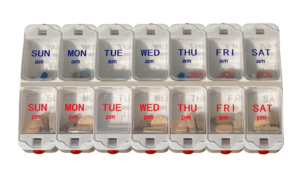Employees can easily enter their hours worked using time tracking software’s user-friendly interface. Supervisors and bookkeepers will benefit from the integration of these solutions with your accounting and scheduling software.
You would have to rely on your memory or watch the clock more and physically record everything if there was no time tracking software. That is neither practical nor effective at scale.
Keep reading for a detailed analysis of the top time monitoring programs available right now. Below, I’ll discuss each one’s attributes, advantages, cost, and any potential downsides.
The Best For Agencies Is TimeCamp
For companies that need to track projects based on billable hours, TimeCamp is ideal. This makes this program a popular pick for businesses and even independent contractors.
The program will automatically keep track of time and allocate it to particular projects. Nobody on your team or you will need to click a single time.
With the desktop program, web application, and smartphone application, TimeCamp is accessible from any device.
TimeCamp includes capabilities for team management and attendance tracking in addition to task management for projects. It is simple to link with the tools you already use to manage chores and projects.
Invoices can also be made with TimeCamp. Based on the choices you apply for each activity, hourly rate, or user, these invoices will populate themselves automatically.
TimeCamp is surprisingly inexpensive for having so many sophisticated features.
You can have an infinite number of users on any subscription, which is somewhat unusual for free tiers. And the Basic plan has all the tools you require to oversee projects and keep track of time for your business. However, neither of the cheaper tiers offers timesheet approvals or invoicing tools—you must subscribe to the Pro plan to use those features.
 Best overall: Time Doctor
Best overall: Time Doctor
Time Doctor provides it all, from basic time tracking capabilities to cutting-edge ones like employee monitoring and customer dashboards.
More than 83,000 companies rely on Time Doctor to boost employee productivity. Brands like Verizon, Allstate, SurveyMonkey, and Home Depot all make use of it.
Time Doctor connects with other business technologies you already use, such as invoicing and payment systems.
Detailed reports on how people are spending their time will also be helpful to you.
When you stray from your assignment, Time Doctor provides you notifications. A Time Doctor mobile app is available for tablets and smartphones. The software will inform you of the most popular websites and applications across all platforms. Both project management and budgeting are made easy with this solution.
The cost of the Time Doctor program varies depending on the size of your team and starts at $12 per month for a single user.
Pricing for enterprises begins at $24 a month. Advanced features like client login access, video screen captures, VIP support, and other group functionality are included in this package.
Best For Simple Time Tracking: Toggl
For anyone looking for the essentials, Toggl is ideal.
They provide time tracking features without a lot of cutting-edge annoyances.
With just one click, tracking can start on any task, including one you’ve already started.
Toggl alerts you when you are idling and reminds you to start or stop monitoring a task if you neglect to do so. Additionally, it connects to more than 100 other programs.
Your data is synced between all devices. Consequently, you may begin tracking time on your browser and stop it on your phone. It is that simple.
With the aid of Toggl, you can manage projects, get in-depth reports, and allocate billable rates to particular tasks.
Although Toggl is undoubtedly the finest for simplicity, it also has several cutting-edge features. You can visit the team dashboard to view the productivity levels of your personnel and use data visualization to compare earnings to labor expenditures.
Toggl’s features are still fairly constrained, despite this. It doesn’t provide as detailed of employee reporting or monitoring as some of the other options on our list.
Toggl’s monthly fee for each user, invoiced annually, is $9. Pricing starts at $18 per month per user with sophisticated features including project management, profitability charts, and team tools.
Toggl offers a 30-day free trial period during which you can use all of its features. The easiest method to determine which plan is best for you is to do this.
The Best App For Tracking Employee Hours Is QuickBooks Time (previously TSheets).
The previous name of QuickBooks Time was TSheets. After purchasing TSheets, QuickBooks rebranded the product. It’s great that they haven’t altered much because it’s still one of the top time monitoring systems on the planet.
Everything that consumers enjoyed about TSheets is still present, and using QuickBooks accounting software makes it much more useful.
Using the time clock feature, payroll processing can be simplified with ease. It’s more affordable than conventional punch clocks and will sync with your books. By doing this, payroll processing time might be cut by several hours.
You can incorporate TSheets with your accounting software in addition to payroll in order to convert employee timesheets into chargeable customer invoices.
Undoubtedly, QuickBooks Time has the best mobile app available right now. It makes use of geofencing technology so that your personnel can clock in and out automatically whenever they enter or leave a predefined border.
If your staff frequently work in the field, this is fantastic.
Advanced capabilities like employee scheduling, team management tools, and informative reports are also available with QuickBooks Time.
Plans begin at $8 per user per month with a base cost of $15 per month. Plans start at $10 per month with a $30 monthly base price for premium features like geofencing and project estimates vs. actuals reporting.
You can save 25% on your first three months for a constrained period. No credit card is necessary for the 14-day free trial of QuickBooks Time.
 Best For Small Businesses: Harvest
Best For Small Businesses: Harvest
With both fundamental capabilities and cutting-edge functionality for things like project management, billing, and scheduling, Harvest is an all-in-one time tracking system.
Harvest’s time monitoring software is trusted by more than 50,000 enterprises. But for small firms, I wholeheartedly endorse it.
This is so you can easily track the tasks of your staff members using Harvest. You will be fully aware of everyone’s work schedule, hours worked, projects being worked on, and level of output.
You can immediately determine who on your staff is the most productive and even who is overworked. These visual reports can assist you in successfully allocating your resources by reassigning work from an employee who is at capacity to an individual who has a lesser workload.
From the same dashboard, Harvest enables you to track and view billable hours. Set up automatic reminders and quickly approve weekly timesheets to ensure that your team submits their timesheets.
Anyone can easily convert monitored hours into client invoices thanks to the program. With only a few clicks, you may send invoices to your clients. Harvest connects with Stripe and PayPal to speed up payment processing.
Additionally, you can combine Harvest with your accounting program, such as QuickBooks or Xero, so that every time you bill customers or receive payments, your books will be updated immediately.
Harvest’s features could be too much for you if you only need simple time tracking software. However, despite having so many cutting-edge capabilities, the price is incredibly low.
Each person’s Harvest monthly fee is $12. With annual billing, you can save 10%.
Harvest also offers a totally free, lifetime plan for individuals. However, you’ll need to switch to the commercial edition if you have a team and need to track staff.
The Best Cheap Time Tracking Software is Timesheets.com.
A simple and affordable time tracking tool is Timesheets.com.
In order to calculate payroll and billable time, the service tracks employee hours. Additionally, it offers a system for managing time off and PTO leaves that enables employee requests, supervisor approvals, and accrual calculations.
Directly from your phone, you and your workers may keep track of mileage, expenses, and upload receipts.
On our list, Timesheets.com has the most reasonable price options. For freelancers and lone users, it’s free. This time tracking software costs only $4.50 per month per user for companies. You will receive a free month if you choose annual billing. Nonprofits receive a 20% discount.
I’m done now. There are no setup costs, additional costs, or requirements for long-term contracts.
On our list, this is the time tracking program with the lowest price. However, it still provides all of the fundamental tools required for time monitoring.
But Timesheets.com has some restrictions. Advanced reporting and project management functions are not available. As the name suggests, it’s more focused on tracking staff hours and timesheets than specific activity tracking.
The Best Employee Productivity Monitoring Software Is Hubstaff
Hubstaff assists in tracking employee activity, apps, and URLs to produce team-specific reports.
A desktop, online, and mobile app are all available for accessing the time monitoring functions.
Hubstaff employs GPS tracking so you can keep track of whether your team is present or traveling. Additionally useful features include team scheduling, geofencing, online timesheets, payroll tools, and invoicing tools based on time recorded.
Hubstaff can be configured to snap screenshots of your employees’ devices on a regular basis. With the aid of this application, you can monitor projects in real-time and change the schedule of your personnel as necessary.
Other apps for project management, CRM, help desk software, payment systems, accounting tools, and other services are all smoothly integrated with Hubstaff.
Hubstaff’s entry-level subscription costs $7 per user each month. However, you’ll want to pay to Hubstaff Premium, which starts at $10 per user each month, to get the most of Hubstaff and its capabilities.
A minimum of two users is required for all paid Hubstaff plans. Therefore, those packages actually begin at $14 and $20, respectively.
Hubstaff offers a free forever plan for single users and straightforward time monitoring. Additionally, there is a corporate package with more sophisticated features, concierge account setup, and larger restrictions for the public API. Most firms probably don’t need all of these features.
When you join up for annual billing, receive two months free. A 14-day trial of Hubstaff is available for free use for two weeks.
How to Choose the Right Time-Tracking App for You
Not all time tracking software produces in the same way. It’s possible that the greatest choice for me and my company isn’t the best choice for you and yours.
There are a few things to consider while comparing different solutions in order to choose the best one for your company. As you consider your needs during the purchasing process, use this methodology.
Needs for Time Tracking
Why do you need time tracking software in particular?
There are various methods for controlling staff productivity, determining project profitability, tracking employee hours for payroll, and other tasks including tracking billable hours.
It’s crucial that you select software with fundamental characteristics that meet your unique requirements.
So think about your company and what you need to do with it.
Extraordinary Qualities
You can begin investigating the “good to have” characteristics once you’ve decided which fundamental features you must have.
This may involve features like geofencing, employee scheduling software, GPS tracking, and app integrations.
The main reason you’re looking for time tracking software shouldn’t be obscured by a big list of extra capabilities. For illustration, suppose you want time tracking software to assess worker productivity. Although it can be “great to have,” software that is specifically designed for keeping track of billable hours and creating client bills is not necessary for your typical use cases.
 Setup and Usability
Setup and Usability
Everyone should be able to use time tracking software with ease. It shouldn’t be harder to track a task or use a function than it was before you started using the app.
Some tools will begin recording time automatically whenever they detect activity and idle time. The installation and setup process shouldn’t be overly intrusive or detrimental to the task at hand.
Only by using a tool can you truly determine how simple it is to utilize it. Every product on our list offers a free trial of some kind, usually lasting between 14 and 30 days.
Group Size
How many users will there be of this time management system?
Larger teams don’t necessarily require more advanced functionality or extra features. Having said that, certain solutions work better for one person or a small team. Others are made for bigger teams and smaller organizations.
Your administrative tools must make it simple to monitor everything from a single dashboard in real-time if your staff is huge. Without having to browse through intricate reports, you should be able to observe all time and activity at a glance.
Price
- Software for time tracking doesn’t have to be pricey.
There are many free plans available for freelancers, individuals, and personal usage that will meet their basic time tracking requirements.
Paid plans often start around $5–12 per month per user until you start dealing with several users, multiple projects, and more sophisticated capabilities. You can typically receive discounts if you commit to an annual plan instead of month-to-month pricing.





More Stories